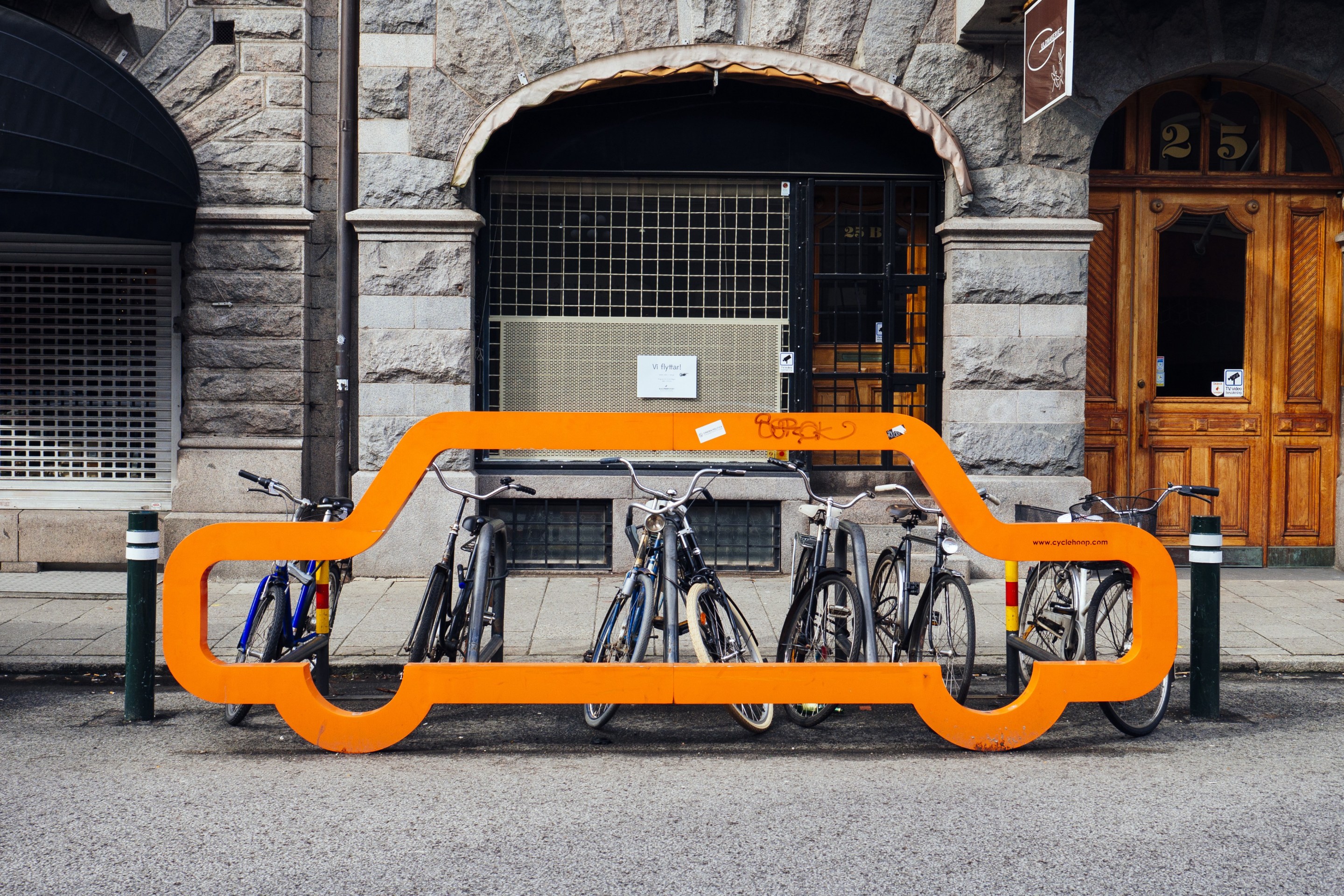Editor's Note: This article originally appeared on Medium. It is republished here with permission from the author.

Greta Thunberg’s “flight shaming” crusade might be getting all the headlines right now, but when it comes to promoting sustainable transportation, Sweden has a lot to say about reducing car use, too.
In Malmo, there’s a famous cycling campaign that urges people to take “no ridiculous car trips.” In Gothenburg, the Västtrafik transit agency runs big ad campaigns offering commuters from car-heavy neighborhoods free “test rides” on trams, buses, or ferries. And in nine Swedish cities aiming to go carbon-neutral, the Viable Cities initiative deploys a chief storyteller whose job is to craft sophisticated green travel messages that go beyond just saying “everyone should stop driving.”
Other eco-conscious cities (and city residents) have offered similar messages over the past year or so. Last year, the D.C. Metro posted ads urging people to ride transit because carbon emissions lead to shark bites (as if there’s nothing else to fear in Washington). Last fall, a vigilante in Victoria, Canada, was caught putting car-shaming fliers on windshields. And this month, Vienna took the cultural high road, offering museum or movie passes to people who trade a car trip for a green one.
What all these efforts have in common is the belief that some powerful sequence of words, perhaps combined with some light incentives, can convince people to drive less than they currently do. That is a very worthy pursuit in an age of climate urgency, given that the vast majority of transport-related carbon emissions come from vehicles. But what’s less clear is whether it’s an effective one, and a new study — out of Sweden, no less — reveals the limitations of car-free messaging alone.
The particular challenge of devoted drivers
The research, published last week in the journal Transport Policy, comes from a trio of researchers based in the Swedish city of Lund. The team recruited nearly 1,000 participants for a two-part online survey, with the goal of measuring the impact that different marketing messages had on a person’s willingness to give up a car trip for a more sustainable travel option.
For the first part of the survey, participants answered questions about their typical travel behavior. Based on these answers, the researchers grouped the participants into eight different types of travelers. These ranged from “Devoted Drivers” (folks who made 80 percent of trips by car) to “Car-free Choosers” (folks who never drove), with others falling in between.
For the second part of the survey, the participants read a variety of sustainable transport messages. After each one, they ranked whether or not their motivation to drive had changed.
Some of the messages invoked personal pleas (“If you want to improve your health, you should ride a bike instead of driving a car…”). Others reflected some financial rationale (“You save about 350 euro per month if you live without a car and instead go by public transit…”). Still others deployed some gentle collective shaming (“We all must help to reduce our climate footprint…”).
There were some encouraging results. Overall, messages pushing collective benefits proved more persuasive than those focusing on personal gains. That was also the case for several groups with relatively high car-reliance, including what the researchers call “Malcontent Motorists” (people who find driving stressful and would welcome an alternative) as well as “Image Improvers” (people who see cars as a status symbol but who also see bikes as a fitness opportunity).
But there was one notable group that didn’t respond at all to the messages: Devoted Drivers. They had the lowest average rating on motivation to reduce car use (2.54, significantly lower than total average of 3.23). And the personal messages aimed at that group made the response even lower (2.38, versus 3.09). The researchers conclude:
Clearly, it’s not fruitful to convince Devoted Drivers to change transport mode with marketing since they oppose messages that promote sustainable transport.
So, even in Sweden, an eco-conscious country with a high sense of social responsibility, and even on paper, with no actual behavioral change on the line, sustainable transportation messages didn’t have any measurable impact on devoted drivers — the population with the greatest potential for carbon savings. To influence that group, the researchers write, you need “other measures.”
Magnifying the message
The simplest measure that can amplify a sustainable transport message is timing. A long line of mobility research shows that behavioral interventions aimed at changing trip habits are most likely to work during major life events. Moving neighborhoods or starting a new job, in particular, create windows of opportunity for people to reevaluate their travel tendencies; that’s one reason Västtrafik — the Swedish transit agency that hands out free passes — targets new residents.
In a 2019 study, for example, transport scholars Kelcie M. Ralph and Anne E. Brown gave new students who moved for a UCLA graduate program a simple map of transit routes. No apps, no free passes, no storytelling. Just a map. That modest, well-timed effort alone increased transit use by 8 percentage points and reduced the share of students always driving to campus by 6 points. New students who didn’t move for the program showed no change.
“The potential to change travel behavior is alive and well,” write Ralph and Brown, “but policy makers should implement interventions at critical life events, such as just before or after a move.”
Even the power of timing has some limits. In a 2019 analysis of U.S. travel data, Nicholas J. Klein and Michael J. Smart indeed found a significant connection between major life events (including relationship changes, having a child, or becoming an empty nester) and travel change. But while moving was also a factor, its magnitude was greatest for moves to (or away from) very different types of neighborhood: for example, from a low-density area to a walkable, transit-friendly one. That was rare.
They conclude:
Marginal changes to the built environment may thus have only marginal impacts until a sufficient portion of the region is easily accessible without a car. Though our models cannot provide direct evidence of this, we believe that longer-term changes to the built environment can shape the relationship between life events and car ownership …
Which speaks to the “other measures” that are so critical for widespread change. They include a suite of long-term (and politically difficult) policies: walkable neighborhood development; dynamic pricing of congested highways, parking spaces, and curbs; transit service improvements; mobility packages that provide access to a car without car-ownership; good street design that creates safe, dedicated space for cyclists, pedestrians, and transit vehicles — among others.
To its credit, Sweden has been out in front on a great many of these initiatives, in particular congestion pricing. Such bold interventions are a lot harder than soliciting or shaming, but they’re also essential to achieve the types of progress our cities (and planet) need. You can’t just talk the talk.






